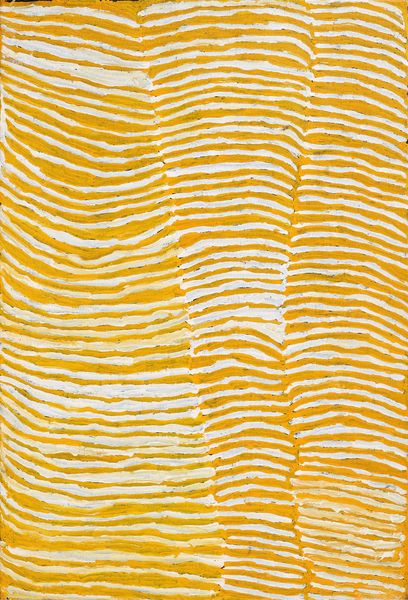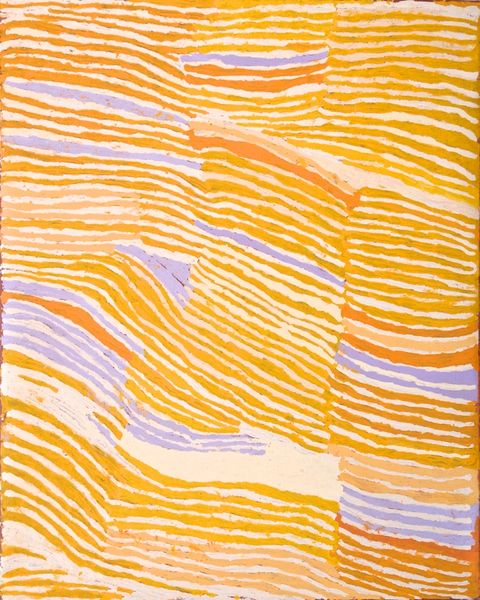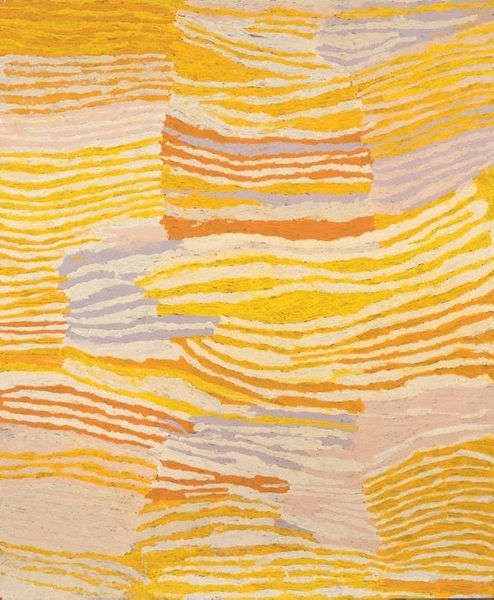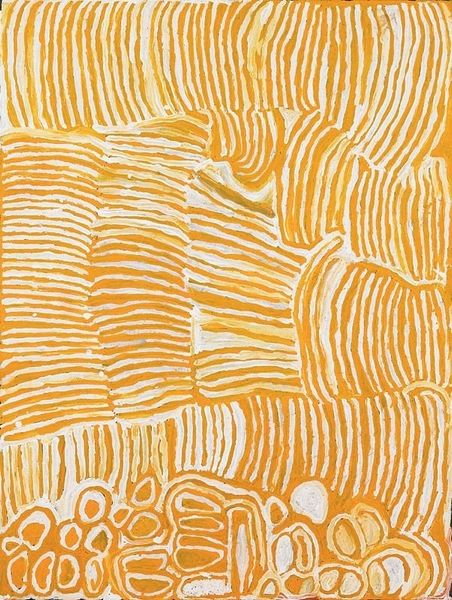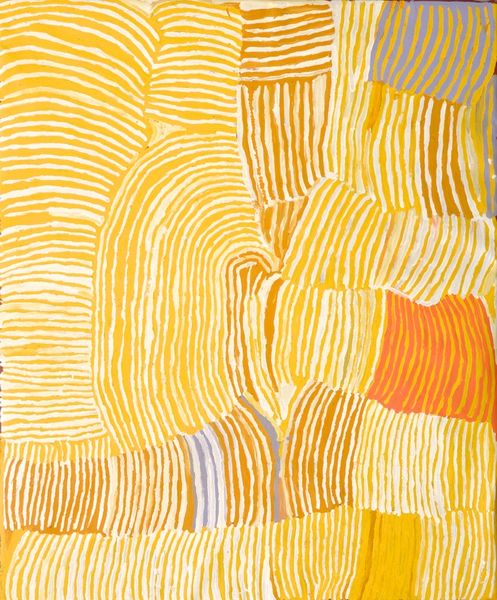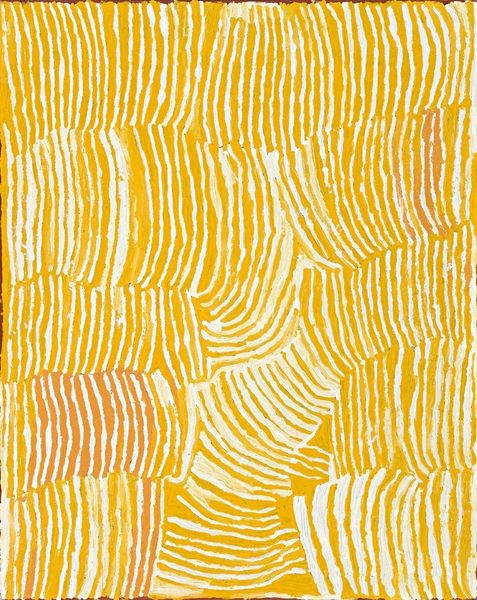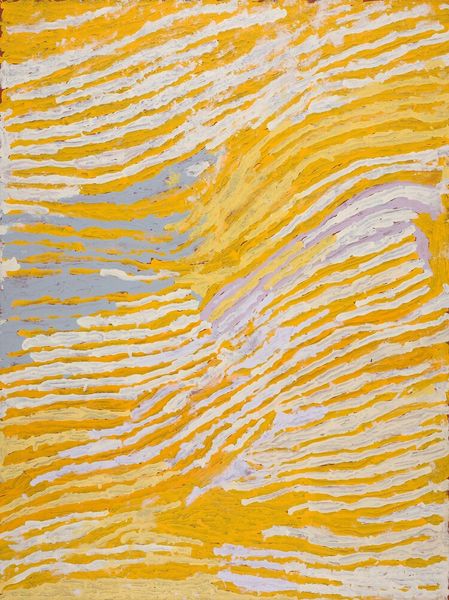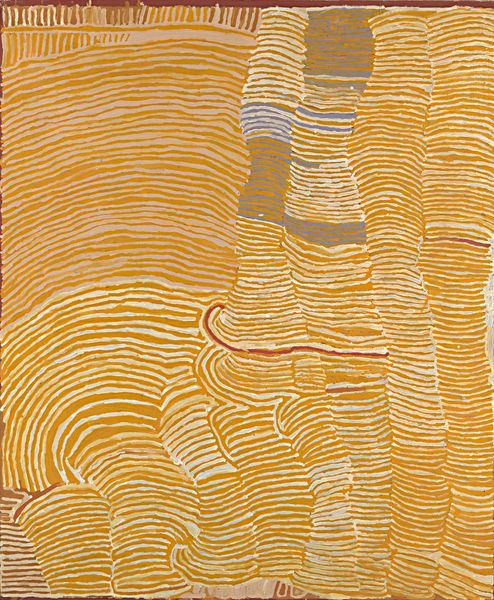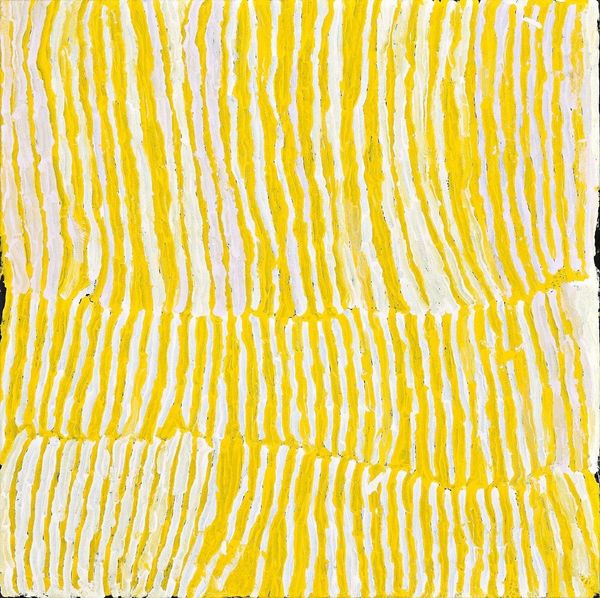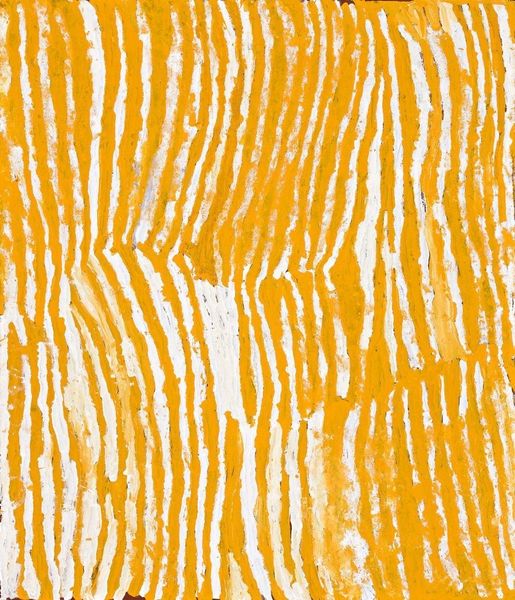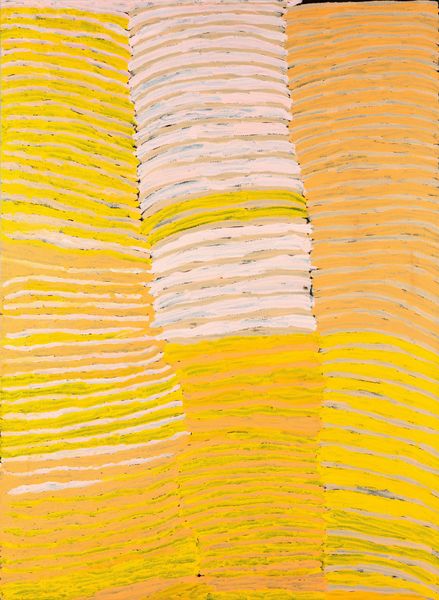
painting
#
abstract painting
#
painting
#
geometric pattern
#
abstract pattern
#
organic pattern
#
line
#
abstract art
Copyright: Makinti Napanangka,Fair Use
Editor: Makinti Napanangka's "Designs Associated with the Rockhole Site of Lupulnga," created in 2004 using acrylic paint, presents a striking pattern of yellow and white lines. There's something very grounded and earthy about its appearance to me. What do you see in this piece? Curator: I see a powerful visual statement that intertwines cultural memory and land rights. Napanangka, a Pintupi woman, is using these abstracted topographic representations to reclaim and reassert her connection to country, specifically the Lupulnga rockhole. The act of painting becomes an act of resistance, doesn’t it? Editor: Resistance in what way? Is it that this connects back to her Indigenous identity? Curator: Exactly! Consider the history of Indigenous art often being sidelined or misrepresented. Napanangka’s work challenges this erasure by centering her ancestral connection to the land. What seems like an abstract pattern becomes a coded map, a testament to her people’s history and enduring presence. Does the palette contribute to this connection to Country? Editor: I think the ochre and white do evoke the Australian landscape, absolutely. I didn’t realize it was a kind of map! Curator: Indeed. Think of the impact—an artwork that simultaneously embodies cultural preservation and actively pushes back against dominant narratives that historically attempted to erase Indigenous voices. It becomes an assertion of sovereignty, wouldn’t you agree? Editor: I see it now, a really thoughtful response to history. Thanks for broadening my understanding of Napanangka’s important work. Curator: My pleasure. Recognizing art's power as a vehicle for cultural resurgence allows us to fully appreciate its multi-layered significance.
Comments
No comments
Be the first to comment and join the conversation on the ultimate creative platform.
